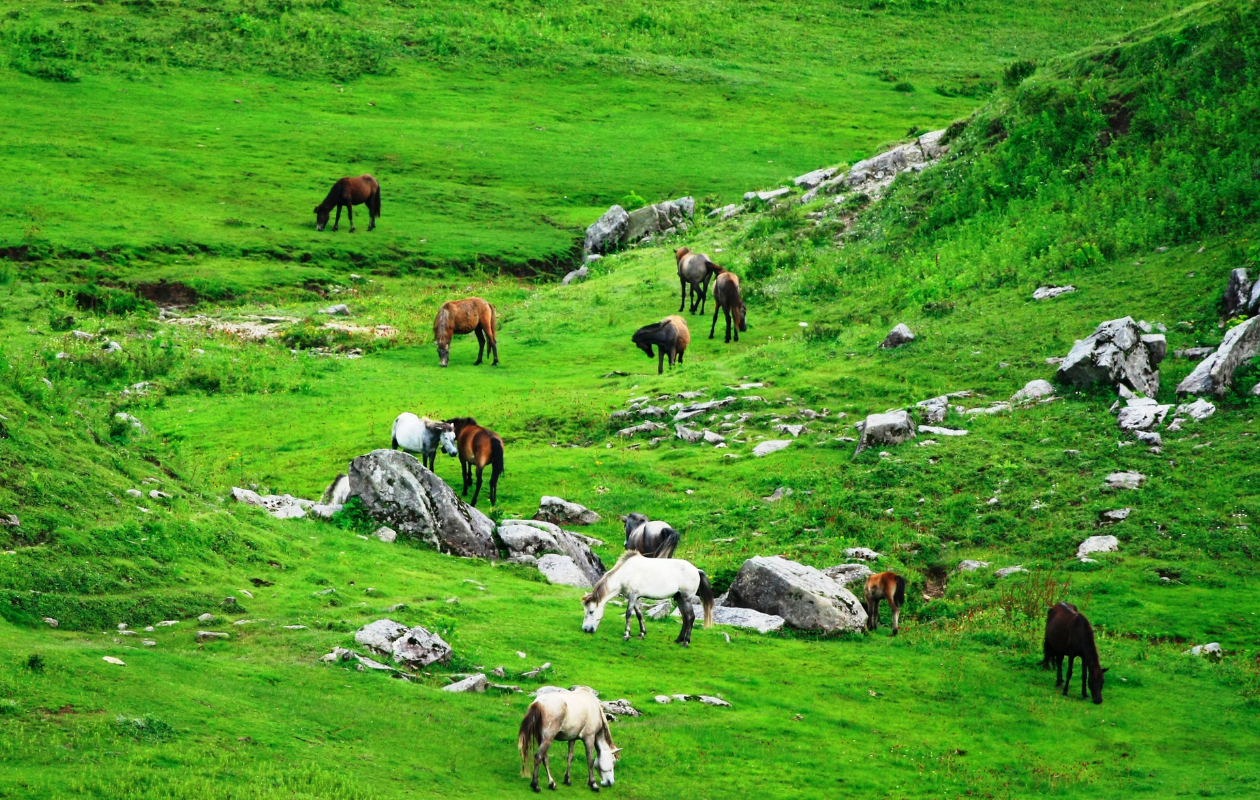Introduction
Far-western Nepal is probably the most beautiful yet underrated region in the country. Many people overlook the far-west region, but the beautiful far-west remains an unspoiled gem. The remote nature of this region means fewer facilities and less comfort, but this also adds to its charm. You can have numerous destinations on your bucket list solely from the far-western region of Nepal.
Mount Api, Saipal, Badimalika, Bardiya National Park, Karnali, etc, are some of the most prominent examples of this place. But among them, Khaptad National Park stands out as the primary trekking destination in the far west. The trek to Khaptad offers a unique blend of comfort and challenge to its visitors. For people with adventurous spirits, the trek to Khaptad offers a perfectly poised challenge.
In recent years, Khaptad has finally started getting the attention it deserves among trekkers and travelers. Let’s embark on this beautiful journey together.
Detailed Itinerary of the Khaptad Trek:
- Day 1: Fly from Kathmandu to Dhangadhi and drive to Silgadhi. On the first day of your trek, you’ll fly from Kathmandu to Dhangadhi, enjoying a scenic flight with mountain views along the way. This flight usually takes 1 hour and 15 minutes. Upon reaching Dhangadhi, you’ll drive towards Silgadhi, a 6-hour journey by jeep or car. The roads are meandering and curved all the way through. You’ll reach Dipayal in the evening, where you’ll spend the night.
- Day 2: Silgadhi to Jhingrana: After breakfast on the second day, start your journey and ascend towards Jhingrana. The surrounding scenery becomes even more stunning as we approach Baghlekh village. The trek from Baghlekh to Jhingrana takes roughly three hours. You’ll spend the night in Jhingrana.
- Day 3: Jhingrana to Khaptad National Park: After breakfast in Jhingrana, you’ll pass past wildflower-covered slopes as you continue the trail. After walking for 2-3 hours, you’ll reach Bichpani, where you can have lunch. Traveling from Jhingrana to the national park’s overnight spot will take about eight or nine hours. As you reach Khaptad, it will probably be evening. Spend the night here and prepare for the next day.
- Day 4: Exploring the National Park: After breakfast, you’ll resume hiking towards Khaptad Daha, a lake 3000 meters above sea level. In the late afternoon, you will visit Khaptad Baba Ashram. In the evening, you’ll hike to Nagdhunga, which is a viewpoint of Mt. Api and Mt. Saipal.

This is the midpoint for the trek:
- Day 5: Travel back to Jhingrana: Following the same footsteps, we head back towards Jhingrana. You can stay overnight at Jhingrana.
- Day 6: Drive to Dhangadhi: From Jhingrana, you travel back to Dhangadhi, where you’ll spend the night. Dhangadhi is the biggest city in the far west region of Nepal.
- Day 7: Fly back to Kathmandu: On the last day, you’ll fly from Dhangadhi to Kathmandu, enjoying similar views. This marks the end of your trek to Khaptad National Park.
Highlights of the Khaptad Trek:
- National Park: Known for its unspoiled natural beauty, the park is home to over 500 flowering plants, diverse wildlife, and rich bird species.
- Khaptad Baba Ashram: This spiritual site is dedicated to the renowned Khaptad Baba, where many pilgrims visit for peace and meditation.
- Grasslands (Patans): Over 22 open grasslands provide stunning views of the hills and the distant Himalayas.
- Solitude and Peace: As the trek is pretty underrated and far from Kathmandu, there are fewer people around this place.
- Biodiversity: Khaptad is home to unique biodiversity and rare animals such as the musk deer, barking deer, and snow leopard.
Some tips For the Khaptad Trek:
- Fitness Levels: This trek is relatively longer and requires more walking per day, so be well-prepared before setting off. To better prepare your body, you can complete small day hikes before the Khaptad Trek.
- Pack wisely: This long trek requires careful planning and execution. Be sure to carry enough essentials like food and water that’ll last you for the entire trek.
- Permits: Special permits are required to trek in this region, which covers the heavily guarded forested National Park area of Khaptad.
- Limited Connectivity: This region has limited cell phone connectivity, so be well-prepared for that.
- Respect The Culture: Be sure to respect the local culture and enjoy your experience to the fullest.
Final Words…
This secluded region in Nepal promises to be an unforgettable experience. Its remote location, diverse landscapes, and spiritual significance make it a perfect destination for those seeking tranquility and a deeper connection with nature. With proper preparation, you can make the most of the Khaptad Trek.
Also Read: Unveiling Lalitpur: A Journey Through Culture And History


0 Comment